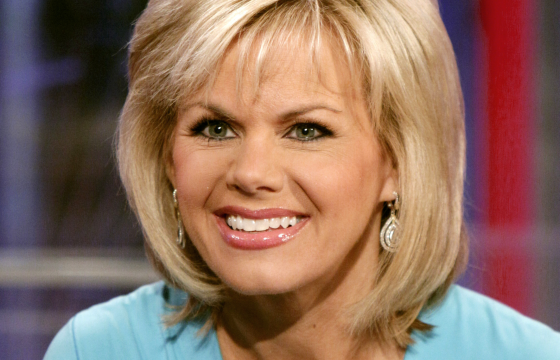The recent horrific killing of a woman who was allegedly strangled by her boyfriend in front of their four-year-old son represents the tragic endpoint of a continuum of violence against women. Any cycle of violence against women may begin simply with harsh words spoken in haste but can systematically scale up into sexual harassment and ultimately into increasing and ever more violence.
The daily newspapers in the United States and across the western world give the impression that there has been a proliferation of violence against women recently. In the last month alone, the New York Times has carried at least two dozen stories concerning sexual harassment (even excluding tales about Trump, who has now been dubbed ‘groper-in-chief’ by media wags who should beware making light of such actions). These range from a congressional inquiry into complaints of harassment by employees of the US National Parks service to the remarkable recent settlement of lawsuits by the Royal Canadian Mounted Police involving cases of harassment of hundreds of female employees, spanning several decades.
One wonders if the incidence of sexual harassment of women in such a variety of environments has actually increased, or if more publicity is just driving more reporting of cases than in the past. Whatever the reason, it may be necessary, if you are a woman, to start labelling certain locales as “hazardous to your health”, just like cigarette packs.
Take the workplace, for instance. That's a milieu that has received a lot of notoriety for sexual harassment lately, largely due to the publicity surrounding the tarnished departure of the head of FoxNews, Roger Ailes, in the midst of lawsuits by former stars alleging sexual harassment, followed by large financial settlements.
These revelations triggered a cathartic moment for many female employees (past and present) who have since come forward to speak out about a hostile culture of harassment among Fox executives at work. The Fox case is not rare in American culture: along with many other complicit corporate institutions, it bears witness to “the greed of powerful men using sexual harassment and intimidation to enslave women," to quote recent remarks by Pope Francis on the plight of women around the globe.
Despite the advances of feminism in furthering the civil and legal rights of women, there is still a predatory male culture out there that every woman has to contend with in a variety of environments. While sexual harassment and intimidation may be frequent in the workplace, there is now plenty of accumulating evidence that females (child and adult) can be at risk in milieus previously presumed “innocent” or “safe”.
There are at least 4 North American newspapers currently carrying out a series of investigative reports to provide data on molestation of female workers, patients, students, and athletes. The Spotlight team at the Boston Globe were pioneers in uncovering sexual abuse of children in the Catholic church. Now they have turned their focus onto private New England schools where many cases of sexual abuse of students (male and female) have been brought to light after being covered up for years. Some of this publicity has forced schools into financial settlements with victims, after years of inaction.
Meanwhile, as we ooh-ed and aah-ed at the feats of Olympic gymnasts in Rio this summer, the Indianapolis Star has been reminding us that many young female gymnasts have had to pay a price at the hands of their coaches. The Star’s investigative reporting has uncovered many hidden cases of girl athletes accusing their coaches of sexual abuse, including some in the USA Gymnastics programme.
In Canada, the Toronto newspaper, The Globe & Mail, has been running a series on diversity, equality and harassment in the workplace, highlighting the new Ontario law (Sexual Violence and Harassment Action Plan Act) requiring every employer to have a policy against sexual harassment in the workplace. The paper cites a common survey finding that many victims of sexual harassment at work never report it to their employers.
The mistreatment of women employees at work also hit the headlines recently in Britain, where the national Trades Union Congress (TUC) issued its own report in August on sexual harassment in the workplace. In a study of 1553 working women, over half those surveyed reported some kind of sexual harassment in the workplace—ranging from inappropriate jokes, or comments about their bodies, to touching, groping, sexual advances (all of which are sexual assault, legally). Over 12% reported aggressive approaches, while 1% reported serious sexual assault, including rape. Younger workers reported higher rates of harassment.
Twenty percent of the female workers identified an authority figure (e.g., boss) as the main source of their mistreatment, but, in a common finding for this kind of workplace harassment, a majority of the women feared reporting their treatment to their employer because they thought it would make waves in the company, with negative consequences, or worse, that their complaints would be belittled.
Whatever the source - an office in Yorkshire, a media conglomerate in New York City, or an archdiocese in Pennsylvania - these data help identify some common features of a harassment culture encountered by women at work, at church, at school, or at play:
1) All of the newspaper narratives of abuse from New England, Atlanta, Indianapolis, and Toronto, converge on common themes: molesters are usually known to the victim(s) and occupy some kind of privileged position - priest, teacher, coach, doctor, boss.
2) Targets may be groomed by the predator over a period of time — e.g. in churches or schools — or approached opportunistically (for example, at Fox News, and in other top-down, hierarchical power structures characterised by superior and subordinate roles (eg, the military)
3) In highly structured institutions, an enabling culture can be created or fostered, wherein powerful authority figures may be part of a cabal of harassers at the top; or, some executives may be passive colluders in the sexual aggression of a few hunters, to which they turn a blind eye (“oh, there goes Roger again, ha ha”).
4) A company may have a “no tolerance” policy on the books for cases of harassment, but it may be no more than a passive token of compliance; it gets applied unevenly, infrequently, or, worse, unfairly favours management over workers.
5) Whether a no tolerance policy is on the books or not, victims are usually traumatised with fear: fear of making an accusation against a superior; fear of not being taken seriously; fear of not being a credible accuser; fear of being branded as a whiner or troublemaker; fear of being stigmatised; fear of losing a job and livelihood. As a result, many victims suffer in silence.
6) The one effective safety valve for victims of sexual abuse and harassment is to have open access to a dedicated, independent, whistle-blowing office known to all participants, and whose sole focus is on the complaining individual—not the company, not the powerful, not the bottom line. Like an Ombudsman.
Pope Francis made his remarks about the global plight of women on the Catholic feast day of the Assumption (August 15), commemorating Mary, the most important woman in Christendom. Francis used the occasion to publicly decry the tragedy of "women enslaved by the arrogance of the powerful" who cause women to suffer when they are “forced to surrender in body and spirit to the greed of men”. He was talking about violence against women in places like Nigeria, Syria, Iraq, or Congo, but his comments hit home also in the so-called “developed” west.
Female victims need all the prayers Francis can offer to Mary on behalf of enslaved women everywhere, but we also need boots on the ground, locally, to be the first line of defence for endangered children and adults. In an increasingly corporate, institutional world, we need not only a compliance officer, or an ethics officer, but also a dedicated victim protection officer whose sole mandate is the honest representation of the interests of the weak, the vulnerable, the exploited—whether they are attending school, going to gym class, visiting their doctor, or trying to make a living in an office.
Dr Arthur McCaffrey is a Catholic writer in Boston, Massachusetts, and a former psychologist at Harvard University
PICTURE - TV personality Gretchen Carlson appears on the set of Fox & Friends in New York. She filed a lawsuit accusing the Fox News chairman Roger Ailes of sexual harassment which led to his resignation. But her experience was just the tip of the iceberg at the American news network




 Loading ...
Loading ...
What do you think?
You can post as a subscriber user ...
User comments (0)